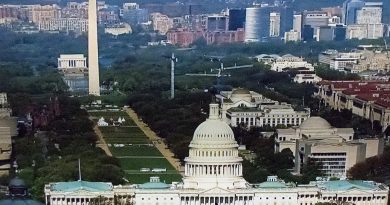Why Are Iraqis Protesting?: Iran’s Influence in Iraq
Ali H. Aljarrah
Staff Writer
After the U.S. assassination of Iran’s Qasam Suleimani, the world held its breath waiting for the Islamic Republic’s ‘vengeance’ for the death of one of its powerful figures. The internet reacted with speculations of World War III, reminiscent to the start of the First World War. Nevertheless, as the world waited, Iraqis were out celebrating the death of a troublemaker, mourning the death of a martyr, or fearful their country will become a battleground for another war. However, it comes to no surprise for anyone paying attention to Iraq that the emotional responses were divided.
Since October 1st, Iraqis from all backgrounds took to the streets to demonstrate against the government for maintaining the sectarian muhasasa political system that has brought corruption and inequality to Iraqi society, according to Al-Jazeera. Setting up camp in Baghdad’s Tahrir Square, demonstrators immersed themselves with national symbols—from emblems of the ancient Mesopotamian civilizations to the modern Iraqi flag. The protests quickly spread from metropolitan Baghdad as Iraqis organized in the oil-rich province of Basra, Shia-dominated cities of Najaf, Karbala and Nasiriyah, and Sunni-dominated Mosul.
This is not the first time Iraqis protest against the government. During the 2011 Arab Spring, Iraqis organized and called on the government to root out corruption, improve basic services, and reform the sectarian-based constitution. The protests ended unsuccessfully as Prime Minister Nour al-Maliki’s government alleged the protests were led by members of Al-Qaeda and former Baathist Party loyalists, which led to more Sunni persecution, and inevitably, the ISIS insurgency.
The issues from 2011 are the same today except with one addition ‒ foreign influence. Before the current protests, the Iraqi public knew that the United States and Iran held significant influence on Iraqi state affairs. However, the demotion of top General Abdel-Wahab Al-Saadi, a respected military leader who is credited to have defeated ISIS, in late September sparked frustration and led the public to believe Iran was behind Prime Minister Adil Abdel Mehdi’s decision according to Foreign Policy.
To protesters, Al-Saadi’s demotion was the final straw as it represents how the government operates on patronage instead of merit which diminishes the country’s potential ‒ with Iran as the main culprit. Since the fall of Saddam Hussein’s government, Iraqi leaders, who helped to create the current constitution and form the new government, were primarily part of the Islamic Dawa Party, a Shia Islamist political party with strong ties to the Iranian government.
As time continued, Iran’s ties with the Dawa Party and other Shia political organizations grew as Iran would provide support and resources in exchange for favorable terms as revealed by The Intercept’s “The Iran Cables.” Iran’s encroachment on Iraq’s government became more apparent during the war against ISIS where they supported Iraqi militias by sending resources and advisors, including General Suleimani. After the defeat of ISIS, political organizations incorporated the militias as part of their security apparatus to protect themselves from rival parties.
Given the protests threaten to dismantle the current political structure, Iran sent Suleimani and other officials to meet with Iraqi officials to reassure their support and advise them on “handling” the protests according to Business Insider. As the Iraqi government became increasingly emboldened on suppressing the protests, it was evident that it was with Iran’s endorsement. Regardless, the pressure from protesters affected Iran’s grip on the country as PM Medhi resigned. Parliament passed new election laws, began the discussion on reforming the constitution, and one of the most powerful Shia clerics, Moqtada al-Sadr, threw his support behind the protests. However, almost all progress stopped when news broke of Suleimani’s assassination.
Days prior to Suleimani’s assassination, an Iranian-backed militia, Kataib Hezbollah, held a demonstration outside and successfully entered the U.S. Embassy in an attempt to look like the wider Iraqi protests in response to American airstrikes against the paramilitary organization days before. After the airstrikes, Iraq was emotionally divided as Suleimani and Abu Mahdi al-Muhandis, the commander of Kataib Hezbollah, were viewed as responsible to have defeated ISIS. On the other hand, there are Iraqis who view them as responsible for Iraq’s incompetent and corrupt governance. However, all Iraqis held their breath in anticipation of a war between Iran and the United States in Iraq.
Although Iran’s response did not trigger a war between the two countries, Iraq is not as united under the protests as before and progress is slower. Nevertheless, a day after Suleimani’s assassination, Iraqis were still protesting on the street in Nasiriyah against the government and foreign influence as reported by the Economic Times. As the Parliament is selecting the next Prime Minister to replace Abdel Mehdi to sanction early elections, the question remains–how much influence will Iran have?

